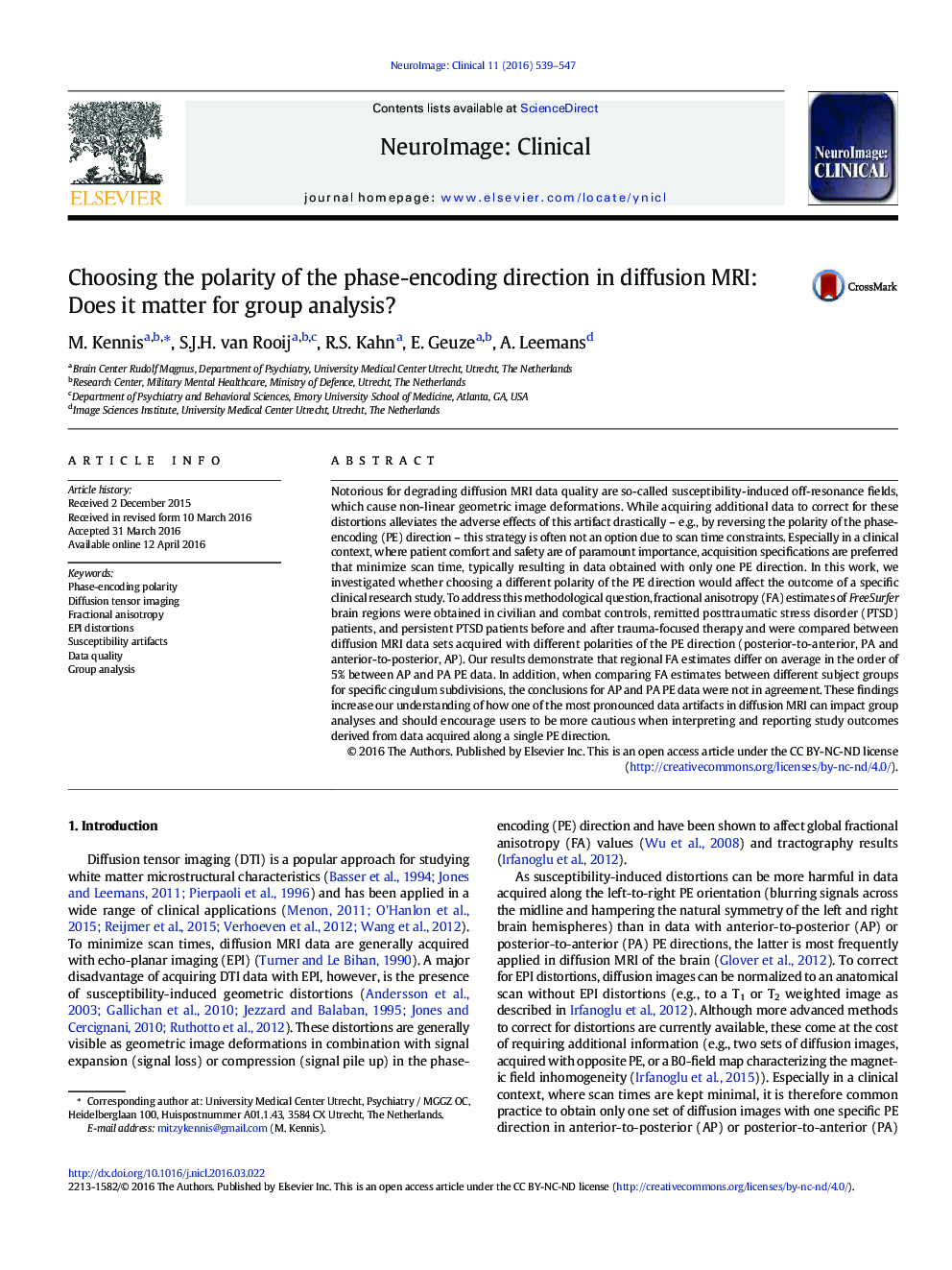| کد مقاله | کد نشریه | سال انتشار | مقاله انگلیسی | نسخه تمام متن |
|---|---|---|---|---|
| 3074944 | 1580956 | 2016 | 9 صفحه PDF | دانلود رایگان |

• The effect of phase encoding (PE) polarity was studied with a DTI group analysis.
• FA differed between scans with opposing polarity of the PE direction.
• The largest FA differences are found at the interface of brain and non-brain tissue.
• The polarity of the PE direction can affect the clinical research outcome.
Notorious for degrading diffusion MRI data quality are so-called susceptibility-induced off-resonance fields, which cause non-linear geometric image deformations. While acquiring additional data to correct for these distortions alleviates the adverse effects of this artifact drastically – e.g., by reversing the polarity of the phase-encoding (PE) direction – this strategy is often not an option due to scan time constraints. Especially in a clinical context, where patient comfort and safety are of paramount importance, acquisition specifications are preferred that minimize scan time, typically resulting in data obtained with only one PE direction. In this work, we investigated whether choosing a different polarity of the PE direction would affect the outcome of a specific clinical research study. To address this methodological question, fractional anisotropy (FA) estimates of FreeSurfer brain regions were obtained in civilian and combat controls, remitted posttraumatic stress disorder (PTSD) patients, and persistent PTSD patients before and after trauma-focused therapy and were compared between diffusion MRI data sets acquired with different polarities of the PE direction (posterior-to-anterior, PA and anterior-to-posterior, AP). Our results demonstrate that regional FA estimates differ on average in the order of 5% between AP and PA PE data. In addition, when comparing FA estimates between different subject groups for specific cingulum subdivisions, the conclusions for AP and PA PE data were not in agreement. These findings increase our understanding of how one of the most pronounced data artifacts in diffusion MRI can impact group analyses and should encourage users to be more cautious when interpreting and reporting study outcomes derived from data acquired along a single PE direction.
Figure optionsDownload as PowerPoint slide
Journal: NeuroImage: Clinical - Volume 11, 2016, Pages 539–547